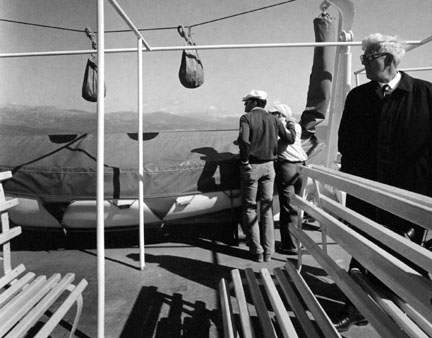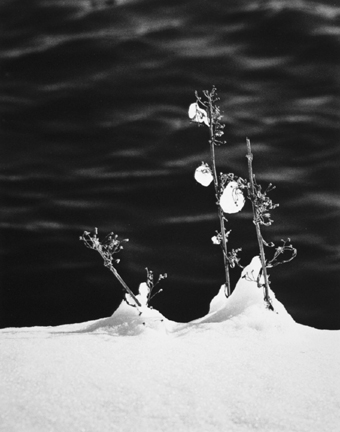About the Photographer
Schulze, John
American, b. 1915
John Schulze has had a long career as an artist and an educator. The MoCP organized a traveling retrospective of his work in 1985, and nineteen of his photographs are represented in the permanent collection, covering a twenty year span from the late 1960s through the early 1980s. These holdings reflect the variety of Schulze's work, including unorthodox portraits, black and white landscapes, and his explorations with color film in the later stages of his practice.
Born in Scottsbluff, Nebraska in 1915, Schuzle began his career as a painter but started to pursue photography in his graduate studies at the University of Iowa. Although his professors rejected his photographic work as mere documentation rather than art, Schulze gradually abandoned painting altogether. In the 1950s and early 1960s, Schuzle's work had a distinctly experimental aspect, challenging the accepted definitions of photography, using methods of photo collages and multiple in-camera exposures. As A.D. Coleman notes in a 1985 essay on Schulze, other artists at the time were doing pivotal work with a similar experimental spirit, including Robert Heinecken, Henry Holmes, and Barbara Crane, but Schulze started to pursue these lines separately, in virtual isolation.
Initially Schulze's focused on human subjects and their bodily presence, but his work grew to address a second theme as well, the natural landscape. In Midwest Reflections, for instance, a series of black and white photographs made in the late 1970s, Schulze photographed the landscapes of his immediate environment over time and made photographs of diminutive plants, imparting a heightened sense of importance by centering them in the foreground and using a shallow depth of field. Schulze saw his primary themes as related in many respects, however, and he stated, "I comprehend that man is not only destroying his environment, but he is also destroying himself. I feel compelled to create symbols of my inner state of mind; and, as my photographs do show evidence in the exploration of beauty, they are also riddled with shadows of other things."
Schulze's influence was most pronounced as a professor, and he taught at the University of Iowa's School of Art and Art History for 36 years. A founding member of the Society for Photographic Education, Schulze was an early proponent in the 1960s of photography's place in art departments at American universities, rather than placed with journalism programs.




